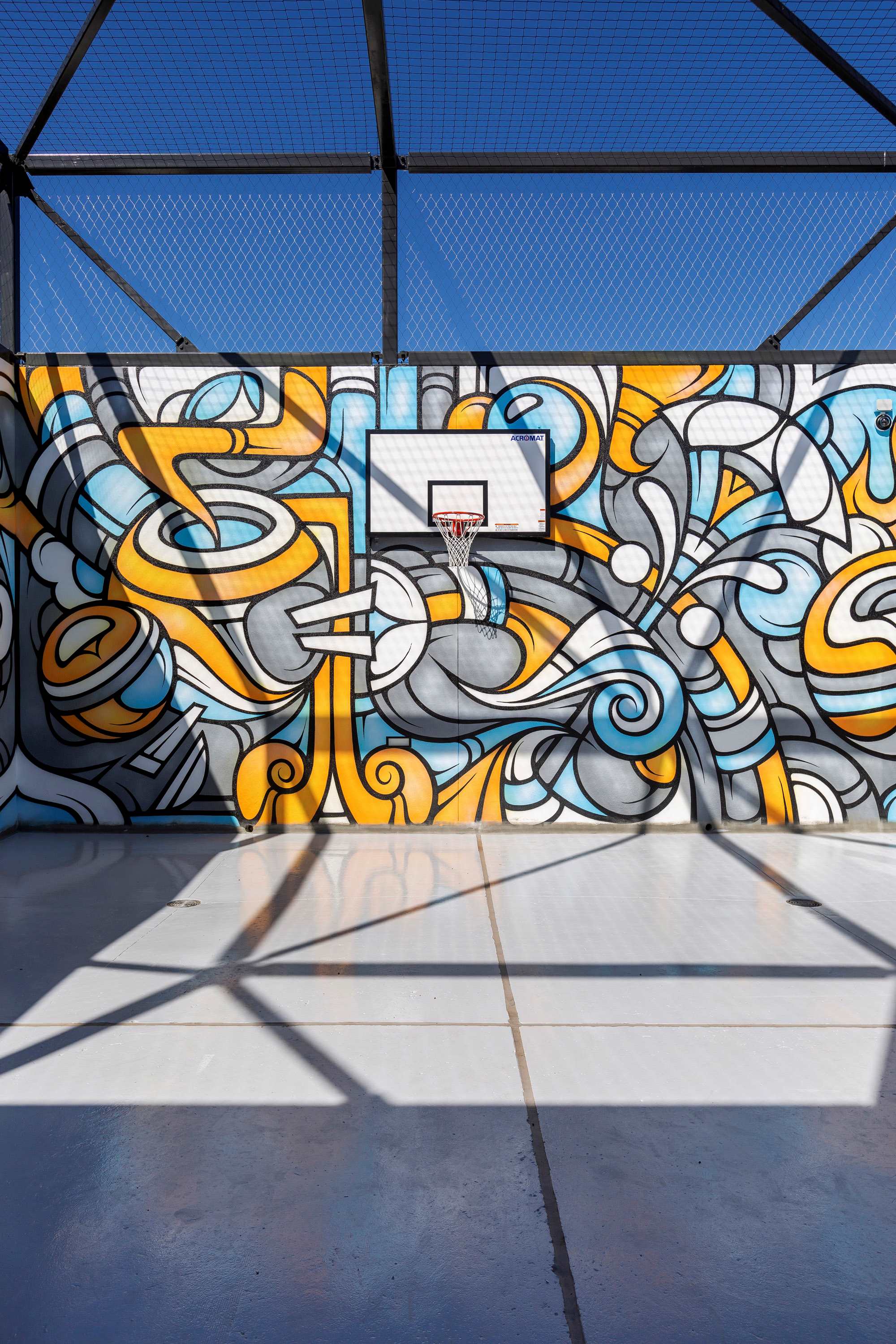Deakin Private Hospital
Canberra, ACT

Destigmatising mental health by fostering a healing environment.
Deakin Private Hospital, situated in Canberra, Australia, serves as a crucial provider of mental health and wellbeing services to the ACT region. This facility addresses a significant gap in the city's mental health services, being the sole private mental health hospital catering to adolescents. The project transformed an existing office building to accommodate 52 hospital beds and support spaces, complemented by an expansion of a new health hub building, featuring group rooms, a gymnasium, consulting facilities, and Transcranial Magnetic Stimulation (TMS) facilities for both inpatients and outpatients. The hospital establishes a precedent for a patient-centric approach, fostering a healing environment through thoughtful design and cultural integration.



Being the first facility for iMH, a joint venture by established healthcare providers Aurora Healthcare & Medibank, Deakin Private Hospital embodies a new model of care and identity, prompting deliberate design considerations in the realm of mental health. The vision aimed to destigmatise mental health hospitals by creating a welcoming environment reminiscent of a boutique hotel rather than a conventional hospital setting. The model of care emphasises adapting to the evolving needs of patients in a supportive recovery-focused setting, as evidenced by positive user feedback stating they felt "safe, comfortable, and nearly at home."
Guided by principles such as identity, nature, active body and mind, independence, connectedness, and peace, the design prioritises a healthy lifestyle and diversional therapies. Purposeful courtyards, one active and one passive, cater to various needs, promoting movement and social interaction in the former and peace and self-reflection in the latter. The spatial planning offers a blend of public and private spaces, allowing users to choose based on their mood, fostering interaction or providing intimate quiet moments.
The interior design deviates from traditional hospital aesthetics, incorporating materials typically found in modern boutique hotels and fashionable homes. The use of soft curves in joinery, floors, and feature walls, along with a mid-century modern-inspired approach with wood veneer and terrazzo benches, contributes toa positive and comfortable environment, encouraging patients to feel at ease.
The project prioritises sustainability through the reuse and readaptation of an existing office, significantly reducing the embodied carbon footprint. Transforming an empty office space and incorporating features like retention tanks for irrigation and material selections with a low carbon footprint further underscore the commitment to sustainable practices.
The project adhered to a brief emphasizing the reuse of an existing building asset, coupled with a new extension and expansion for consulting purposes. Drawing inspiration from the local context and architectural heritage of Canberra, the site's location opposite the Royal Mint of Australia influenced both exterior and interior design choices. Architectural elements, such as curved batten screening, joinery, flooring shapes, and a material palette featuring copper and oxidized metal, pay homage to the coins created at the Royal Mint.




Guided by principles such as identity, nature, active body and mind, independence, connectedness, and peace, the design prioritises a healthy lifestyle and diversional therapies. Purposeful courtyards, one active and one passive, cater to various needs, promoting movement and social interaction in the former and peace and self-reflection in the latter. The spatial planning offers a blend of public and private spaces, allowing users to choose based on their mood, fostering interaction or providing intimate quiet moments.
The interior design deviates from traditional hospital aesthetics, incorporating materials typically found in modern boutique hotels and fashionable homes. The use of soft curves in joinery, floors, and feature walls, along with a mid-century modern-inspired approach with wood veneer and terrazzo benches, contributes toa positive and comfortable environment, encouraging patients to feel at ease.
The project prioritises sustainability through the reuse and readaptation of an existing office, significantly reducing the embodied carbon footprint. Transforming an empty office space and incorporating features like retention tanks for irrigation and material selections with a low carbon footprint further underscore the commitment to sustainable practices.
The project adhered to a brief emphasizing the reuse of an existing building asset, coupled with a new extension and expansion for consulting purposes. Drawing inspiration from the local context and architectural heritage of Canberra, the site's location opposite the Royal Mint of Australia influenced both exterior and interior design choices. Architectural elements, such as curved batten screening, joinery, flooring shapes, and a material palette featuring copper and oxidized metal, pay homage to the coins created at the Royal Mint.










